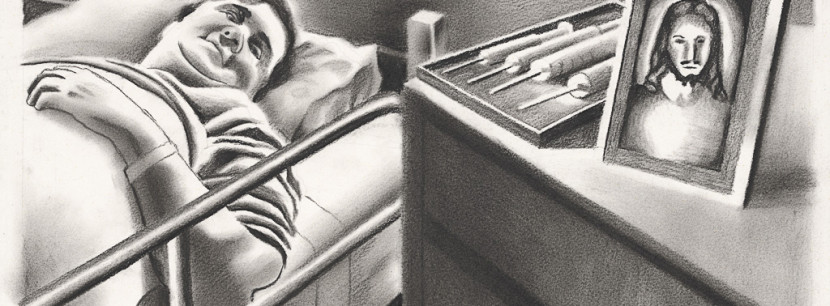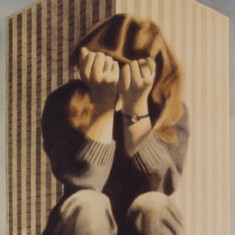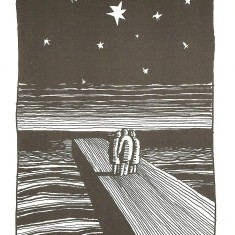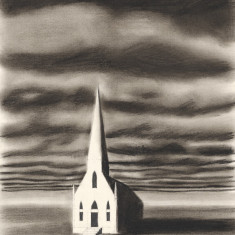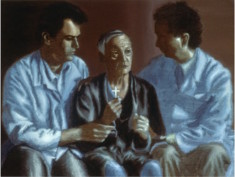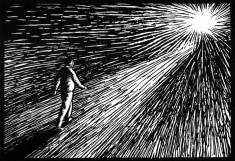Religion & Spirituality
Robert’s father, William was a United Church minister before he became a publisher. William viewed religion as a practical force in people’s daily lives, a force that encouraged people to strive for self-improvement or work toward larger goals within the community. These values had a strong impact on Robert’s approach to art and life. At first, Robert was reluctant to introduce religion in his images. Religious references tended to be hidden and ironical, as in his drawing The Six O’clock News, in which the artist suggests TV is a new form of religion enshrined within the family home. The “Seal Upon Thine Heart” series uses a Biblical passage for its title, and several images from this exhibition use metaphors or language from the Bible transposed into contemporary settings. Increasingly nature takes on a supernatural power, as in the drawing, Into the Light. The treatment of religion is more overt in the “Illness & Healing” series. The Gift portrays a chemo patient, his wife and new-born child as a holy family. Patients are often portrayed as martyrs, doctors as priests. Robert observes how important faith is to patients facing difficult choices. Chemotherapy and Christ shows a patient staring at a set of syringe needles and a picture of Jesus. Which of the two offers more comfort? Mr. S is told that he will die shows an elderly man holding a cross as doctors inform him that his end is near. Vision shows members of a church choir singing to a patient in a hallucinatory dream-like scene. Robert was noted for his hand-drawn Christmas cards and often changed a favourite motif, such as figures on a wharf, to suggest a more spiritual context.
